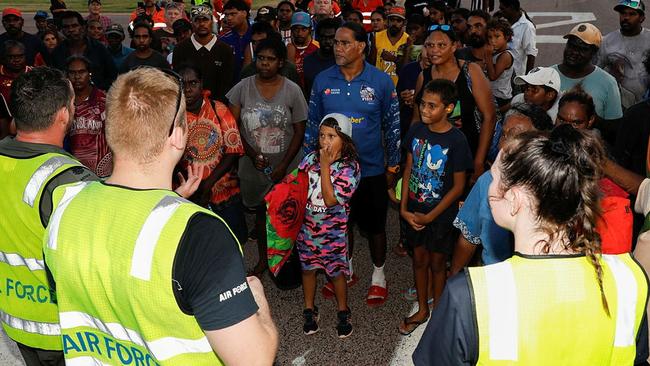Senate Committee finds ADF should be ’last resort’ for natural disasters, Luke Gosling responds
After consecutive years of the ADF responding to natural disasters, a report has declared military personnel should be used as a ‘last resort’, urging the government to find an alternative. A Territory politician has weighed in.

Northern Territory
Don't miss out on the headlines from Northern Territory. Followed categories will be added to My News.
The impacts of floods, fires and cyclones should not be handled by the Australian Defence Force (ADF), a Senate report claims – with “alternative models” recommended to deal with the nation’s natural disasters.
This week, a Select Committee published its report Boots on the Ground: Raising Resilience, which examines the nation’s arrangements around disaster response.
The committee, established in November, 2022, was formed after a string of natural disasters was met with an unprecedented number of both full-time and reserve ADF personnel being deployed in a domestic operation capacity.
Operation Bushfire Assist 2019-2020 alone cost approximately $68.6 million and, at its peak, involved the deployment of 6500 ADF personnel, including 3000 reservists who were under compulsory call-out orders.

The non-negotiable deployment of reserves was also the first time the ‘Calling out the Reserves’ powers were used for a national disaster under the Defence Act.
Chaired by Tasmanian Senator Jacqui Lambie, the committee agreed with findings from both the Defence Strategic Review and the Royal Commission into National Natural Disaster Arrangements that the ADF’s role in defending Australian needed to be preserved.
“Therefore the ADF should only be called upon as a last resort to respond to natural disasters when all other capabilities have been exhausted.”
However, the report conceded that a dedicated response to natural disaster was required.
“It is apparent to the committee that alternative models need to be explored to bolster Australia’s capacity to respond to natural disasters without relying on the ADF.”

The report examined the capability of the already established Disaster Relief Australia (DRA) as well as the concept of a National Guard, which was pitched by Senator Lambie.
Ultimately, the committee recommended the Albanese government support the DRA beyond its $38.3 million investment into the organisation, while the National Guard concept was deemed as needing “further investigation”.
“The committee is of the view that the Australian Government should, as a matter of priority, consider ways to incentivise young Australians to volunteer in disaster response and recovery efforts to support communities across Australia.”
Former soldier and Solomon MP Luke Gosling agreed the ADF should not be first point of call.
“If Australians find themselves in an emergency situation where Defence has a unique capability to bring to bear, it will always be there,” he told the NT News.
“Defence is always going to be there helping out. However, we need to be clear that Defence is not the first call that’s made, it’s the last.”
Mr Gosling said government at state and federal level needed to work “more closely”.
“The Defence Strategic Review observed the changing climate and the greater frequency of significant weather events, be it cyclones, floods, fire, are all creating a much bigger demand on the Defence Force,” he said.
“So, we need to think about the load that is being placed on the Defence Force because its primary job is to provide for the defence of the nation – it is about getting that balance right.”

With the Albanese government having established the National Emergency Management Agency (MEGA) in 2022, Mr Gosling said he was hopeful air assets could be readily deployed to remote and regional locations.
“Ensuring access to a fleet of aircraft that can be used for firefighting, emergency rescue and evacuation in times of natural disaster, more steps towards putting downward pressure on insurance premiums and maintaining a stockpile of emergency supplies are just some of the important investments the Albanese Government is making to help keep Australians safe,” he said.
“For example, NEMA is working with the National Aerial Firefighting Centre to shape a future fleet of aircraft that can be used across the country.”





